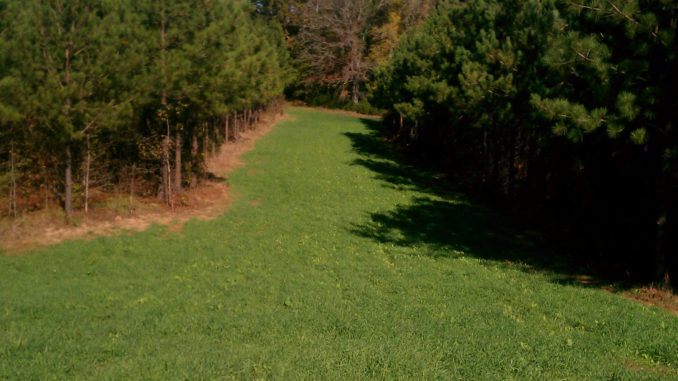
Put your ‘land plan’ on paper and follow it
Landowners and hunters invest countless hours on their hunting parcels cultivating food plots; constructing tree stands, maintaining access corridors and conducting timber-improvement activities. Most rural land with a combination of woods and open land has ample potential to produce wildlife in quality and quantity. But, too often, landowners begin conducting management activities on certain areas in a haphazard manner without a real plan in place. They should develop a written management plan incorporating timber management, food-plot cultivation, prescribed fire and other activities, utilizing the complete acreage to reach their management goals.
Just about every tract of land in the Carolinas offers an opportunity to provide a variety of game species preferred habitat. It really does not matter if a landowner wishes to manage for bobwhite quail or whitetail deer or both. All wildlife habitats must have four essential components in order to keep animals happy and close to home: food, water, cover and rearing areas. While different species have their personal sets of needs, every square inch must be incorporated into one of the essential habitat components under a management prescription and monitoring program.
For starters, landowners should list the objectives for their parcel; they can represent several facets of their vision, with timber, wildlife and agriculture components. In fact, good timber management often leads to good wildlife management, but some timber-management activities may not offer benefits to certain species. Management prescriptions should strive to meet all objectives in one form or another, with some negotiations along the way. With that being said, a landowner should list his or her management objectives, which may include several species of wildlife, agriculture value and timber asset.
Developing and growing thick and rich food plots should always be a part of any wildlife and habitat-management plan. The written plan should include every aspect planned for each specific food plot including soil tests and enrichment, prescribed seed mixes in fall and spring, plowing, weed control and an annual schedule for conducting these tasks.
Each forest stand should be identified, documented and harvest prescriptions should be provided to benefit the landowner’s objectives. A schedule for these tasks should be provided for each stand. Future stand prescriptions and expectations should be documented as well.
Beyond land management, the plan should address more specific data on wildlife species themselves, such as harvest restrictions and bag limits for each species under their objectives. Since wildlife and forest management prove to be very dynamic, landowners should be prepared to make changes to their plan as situations develop and all changes should be recorded in the working document.
A written wildlife and forest-management plan will become a playbook and essentially a manual for bringing landowners and hunters to meet their goals. If any landowners need any assistance in preparing a wildlife and forest management plan, North Carolina and South Carolina agencies offers numerous professionals who specialize in assisting landowners in reaching their objectives.
Keep Activity Log
Wildlife and forest-management activities can incorporate a long list of duties throughout the year from annual prescriptions to routine applications and monitoring. Since most hunters and land managers continue to strive to flatten the learning curve, all actions and duties should be recorded with any detail available into an activity log.
Forest stand and silviculture activities should be noted, including each individual activity conducted in the participating stands. In addition, any future prescriptions by the forester should be noted for each stand.
Food-plot cultivation alone will generate lists of quantities and other prescription data that will help land managers understand what works and what doesn’t. In addition to the activity log, weather conditions and any rainfall data should be noted before and after planting or any chemical treatment along with the date of application.
The activity log should be kept with the rest of the management plan and be easily accessible for reference.




Be the first to comment